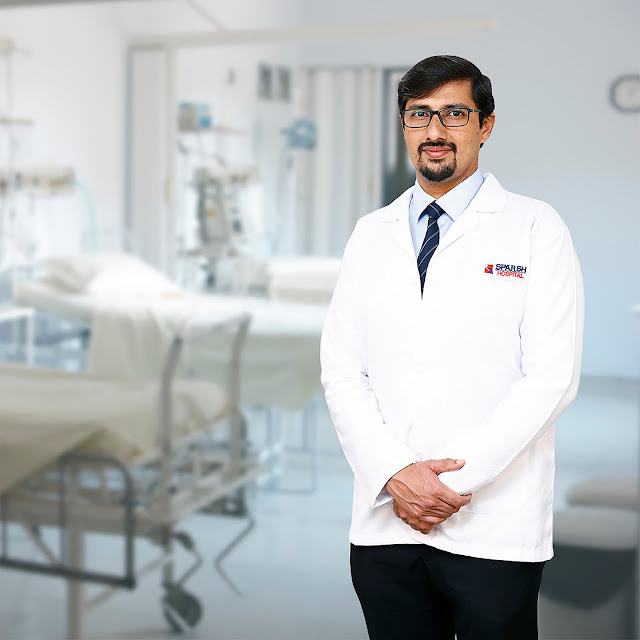Robotic Surgery is Enhancing Precision and Safety for Complex GI Surgeries
by Priya Jadhav
Authored by Dr. Muralidhar S. Kathalagiri
Consultant Laparoscopic, Bariatric &Gastrointestinal Surgeon, SPARSH Hospitals Bangalore

In recent times, Robotic Surgery has emerged as a ground-breaking technological advancement in the field of medicine, revolutionizing the way complex gastrointestinal procedures are performed. This innovative approach blends the expertise of surgeons with the precision and accuracy of robotic systems, resulting in enhanced surgical outcomes, improved patient safety, and reduced healing and recovery period.
Here are the ways robotic surgery is transforming the landscape of GastroIntestinal procedures:
#Enhanced Visualization
One of the key advantages of robotic surgery in complex gastrointestinal procedures is the enhanced visualization provided by the robotic system. Surgeons can access a three-dimensional, high-definition view of the surgical site, which allows for better identification of anatomical structures, improved depth perception, and increased precision during intricate maneuvers. This level of visualization aids in reducing the risk of accidental tissue damage and enables surgeons to navigate complex anatomical structures with greater accuracy.
#Increased Precision
Robotic-driven surgical systems are equipped with robotic arms that can replicate the precise movements of a surgeon's hand with enhanced dexterity. This allows for meticulous dissection, which is particularly crucial in procedures such as colorectal surgeries, pancreatic Surgeries, complex hernia surgeries or esophageal surgeries etc. The robotic mechanism can perform complex movements with increased stability, providing surgeons with greater control and precision throughout the procedure.
#Minimal Invasive Approach
Robotic surgery also facilitates a minimally invasive approach to complex gastrointestinal procedures such as Pancreas Surgery, Liver and Bile Duct Surgery etc, enabling several benefits for patients. The robotic arms are inserted through small incisions, minimizing trauma to surrounding tissues and reducing post-operative pain. This approach results in shorter hospital stays, quicker recovery times, and reduced risk of complications, such as infections and wound healing problems. The smaller incisions also lead to improved cosmetic outcomes for patients.
#Improved Ergonomics and Surgeon Comfort
Traditional laparoscopic surgery often requires surgeons to maintain uncomfortable positions and perform repetitive movements for extended periods. Robotic systems address this challenge by offering improved ergonomics for surgeons. They can sit comfortably at a console, controlling the robotic arms with precise hand movements and using foot pedals for additional functions. This ergonomic advantage reduces surgeon fatigue, enhances concentration, and allows for longer, more complex procedures with increased precision.
#Integration of Advanced Technologies
Robotic surgical systems are continually evolving, integrating advanced technologies to further enhance precision and safety in gastrointestinal procedures. By combining the skills of surgeons with robotic technology, procedures such as colorectal surgeries, pancreatic Surgeries, complex hernia surgeries or esophageal surgeries, and others can be performed with enhanced visualization, increased precision, and reduced invasiveness.
Robotic surgery has ushered in a new era of precision and safety in complex gastrointestinal procedures. The continuous advancements in robotic surgical systems offer a promising future for the field, with the potential to further improve patient outcomes, minimize risks, and revolutionize the surgical approach to gastrointestinal conditions.


Comments
Post a Comment